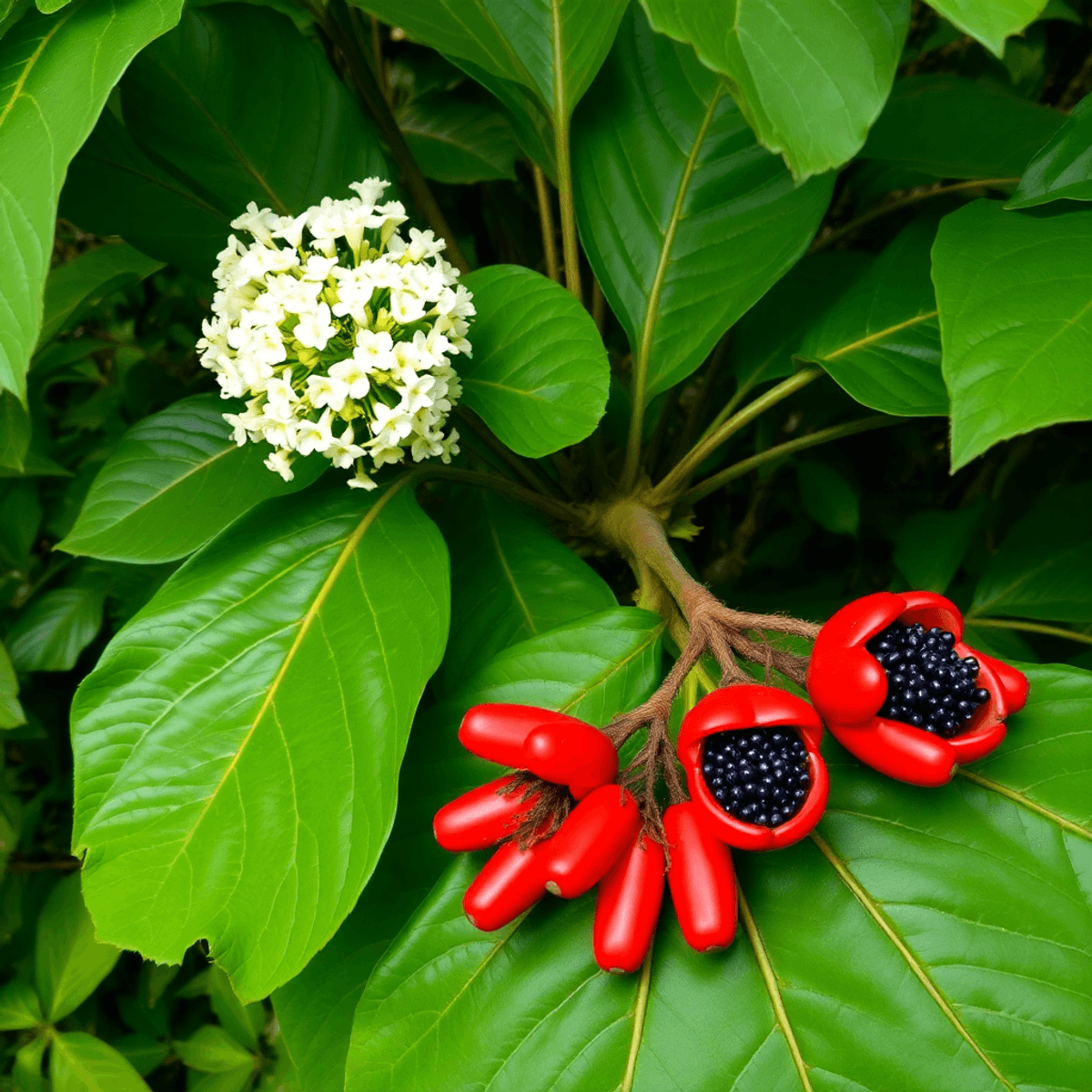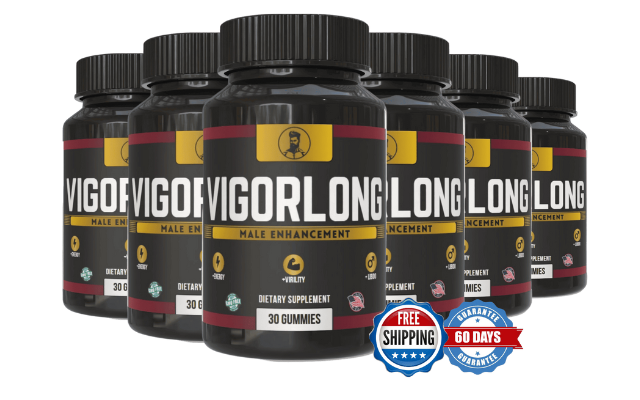Guarana: The Ultimate Guide

Introduction
Deep within the lush Amazon rainforest lies a remarkable botanical treasure - Guaraná (Paullinia cupana), a climbing plant belonging to the Sapindaceae family. This native Brazilian plant has captured the attention of researchers and health enthusiasts worldwide through its extraordinary properties and versatile applications.
The distinctive characteristics of Guaraná set it apart in the plant kingdom:
- Large, compound leaves that create a dense canopy
- Clusters of delicate flowers that bloom seasonally
- Fruit capsules revealing seeds comparable to coffee beans in size
These seeds represent the plant's true value, containing caffeine concentrations 4-6 times higher than coffee beans. This potent natural stimulant has earned Guaraná its reputation as a powerful energy booster and therapeutic agent.
Research into Guaraná has revealed a complex profile of bioactive compounds that extend beyond its stimulant properties. The plant has demonstrated potential benefits in:
- Cognitive enhancement
- Physical performance optimization
- Metabolic health support
- Weight management
The growing interest in natural alternatives to synthetic supplements has propelled Guaraná into various industries, from traditional medicine to modern energy drinks. This remarkable plant continues to bridge ancient wisdom with contemporary wellness practices, making it a significant subject of scientific investigation and commercial development.
Understanding Guarana
Paullinia cupana, commonly known as Guarana, is a fascinating plant found in the Amazon rainforest. This climbing plant has unique features that make it different from other plants in the region:
Physical Features:
- Woody vines that can grow up to 12 meters (39 feet) tall
- Large compound leaves with serrated edges
- Clusters of small white flowers
- Bright red fruit capsules containing black seeds
The most valuable part of the plant is its seeds. These seeds are similar in size to coffee beans, but they have a higher caffeine content. Studies show that Guarana seeds contain 2-8% caffeine, while coffee beans usually contain 1-3%.
Botanical Classification:
- Family: Sapindaceae
- Genus: Paullinia
- Species: P. cupana
The fruit of the Guarana plant grows in clusters and changes color from green to bright red when it ripens. When the fruit is fully mature, it splits open to reveal a black seed partially covered by a white aril, resembling an "eye." This unique appearance has given the plant cultural significance among indigenous communities in the Amazon.
After harvesting, the seeds go through a careful processing method:
- Collection at peak ripeness
- Removal from fruit capsules
- Washing and cleaning
- Roasting process
- Grinding into powder
These processed seeds are used as the main ingredient in various Guarana products, including traditional preparations and modern supplements.
Cultural Significance and Historical Context of Guarana
Guarana has a rich cultural heritage that dates back to the Sateré-Mawé people, an indigenous tribe of the Amazon rainforest. According to their ancestral legend, Guarana sprouted from the eyes of a divine child, making it a sacred plant deeply woven into their spiritual beliefs.
Traditional Uses of Guarana by Indigenous Tribes
Indigenous tribes have used Guarana for centuries as:
- A natural remedy for hunting-related fatigue
- A sacred component in tribal ceremonies
- A traditional medicine for various ailments
- A source of strength during long expeditions
Preparation Methods of Guarana by the Sateré-Mawé People
The Sateré-Mawé people developed intricate preparation methods, including:
- Hand-harvesting the ripe fruits
- Removing and washing the seeds
- Roasting them over sacred fires
- Grinding into a fine paste
- Shaping into cylindrical sticks called bastões
Spread of Guarana Beyond Tribal Boundaries
These traditional practices spread beyond tribal boundaries during the European colonization of Brazil in the 16th century. Portuguese settlers recognized Guarana's potential, leading to its initial commercialization and cultivation outside indigenous territories.
Rise of Guarana in Brazilian Urban Areas
By the 1900s, Guarana had gained prominence in Brazilian urban areas, appearing in carbonated beverages and natural supplements. The plant's journey from sacred tribal medicine to global commodity reflects its adaptability and enduring appeal across cultures.
Scientific Validation of Traditional Uses
Modern scientific research continues to validate many of the traditional uses first discovered by indigenous healers, establishing Guarana as a bridge between ancient wisdom and contemporary wellness practices.
Health Benefits of Guarana
Research has identified numerous bioactive compounds in guarana that contribute to its remarkable health benefits. The seeds contain a complex mixture of substances, including:
- Methylxanthines: Caffeine (2-8%), Theophylline, Theobromine
- Other Beneficial Compounds: Tannins, Saponins, Catechins, Epicatechins, Proanthocyanidins
These compounds work together to produce multiple health effects. Our laboratory studies have demonstrated guarana's potential in:
- Cognitive Enhancement: Improved memory retention, Enhanced focus, Increased mental alertness, Better reaction time
- Metabolic Benefits: Accelerated fat oxidation, Enhanced metabolic rate, Improved weight management
The mechanism of action primarily involves the central nervous system (CNS). While coffee's caffeine effects typically peak within 1-2 hours, guarana's unique composition allows for a sustained release pattern, extending its stimulant effects for up to 6 hours.
Research indicates guarana's distinct advantages over traditional caffeine sources:
"The combination of guarana's bioactive compounds creates a more balanced stimulant effect compared to coffee, with reduced likelihood of jitters and crash effects" - Journal of Ethnopharmacology
The plant's high antioxidant content supports cellular health through:
- Free radical neutralization
- Reduced oxidative stress
- Enhanced cellular repair
- Improved mitochondrial function
Clinical studies suggest guarana's anti-inflammatory properties may benefit various conditions:
- Arthritis
- Cardiovascular health
- Digestive disorders
- Athletic performance
The sustained energy release pattern stems from guarana's unique molecular structure, where caffeine bonds with tannins, creating a time-released stimulant effect that differs significantly from coffee's immediate impact.
Exploring the Uses of Guarana
Guarana's versatility extends across multiple consumption methods and applications in both commercial products and home-based preparations. Our research reveals diverse ways to incorporate this powerful Amazonian plant into daily routines:
Commercial Applications
- Energy drinks and sports beverages
- Pre-workout supplements
- Weight management formulations
- Natural food additives
- Flavoring agents in soft drinks
Dietary Supplement Forms
- Capsules (standardized extracts)
- Powder for smoothies and shakes
- Liquid extracts
- Tea bags and loose-leaf blends
- Tablet formulations
Culinary Applications
The culinary world has embraced guarana's unique properties through creative recipes:
- Energy-boosting breakfast bowl: Mix guarana powder with açai, banana, and granola
- Pre-workout smoothie: Blend guarana powder with coconut water, mango, and lime
- Natural energy bars: Combine guarana powder with dates, nuts, and seeds
- Energizing hot chocolate: Add a pinch of guarana powder to traditional hot cocoa
- Performance-enhancing protein shakes: Mix guarana powder with protein powder and fruit
Sports Nutrition Integration
Athletes and fitness enthusiasts incorporate guarana through:
- Pre-workout formulations
- Endurance-focused energy gels
- Recovery drink mixes
- Performance-enhancing supplements
- Hydration beverages
Research indicates that guarana's sustained release of stimulants makes it particularly effective in sports nutrition products, providing longer-lasting energy compared to traditional caffeine sources. The food industry continues to develop innovative applications, from guarana-infused protein bars to specialized athletic supplements targeting specific performance needs.
Potential Side Effects and Precautions with Guarana Consumption
Research indicates that excessive guarana consumption can trigger several adverse reactions due to its high caffeine content. Understanding these potential risks helps consumers make informed decisions about their guarana intake.
Common Side Effects:
- Severe anxiety and restlessness
- Persistent insomnia
- Rapid heart rate and palpitations
- Digestive issues including stomach pain
- Increased blood pressure
- Headaches and migraines
- Dehydration
Safe Consumption Guidelines:
- Daily intake should not exceed 400mg of caffeine from all sources
- Start with small doses to assess individual tolerance
- Space consumption throughout the day rather than single large doses
- Stay hydrated by drinking adequate water
Medical Precautions
Certain individuals should exercise particular caution or avoid guarana:
- Pregnant and nursing women: Risk of complications due to high caffeine content
- Heart condition patients: Potential strain on cardiovascular system
- Anxiety disorder sufferers: May intensify symptoms
- People with bleeding disorders: Can interfere with blood clotting
- Those taking specific medications: Including blood thinners, antidepressants, and certain antibiotics
Drug Interactions
Guarana can interact with various substances:
- Aspirin and anticoagulants
- MAO inhibitors
- Some antibiotics
- Stimulant medications
- Birth control pills
Research suggests maintaining a 4-6 hour gap between guarana consumption and any prescribed medications to minimize potential interactions. Consulting healthcare providers before incorporating guarana into daily routines proves essential for individuals with pre-existing conditions or those under medication.
Additionally, it is worth noting that guarana's effects on mental health have been the subject of recent studies, highlighting the importance of understanding its impact on anxiety and other psychological conditions.
The Cultivation and Economic Impact of Guarana in Maués
Maués, a municipality in Brazil's Amazonas state, is the leading producer of guaraná, earning it the title "Land of Guaraná." This climbing plant (Paullinia cupana) flourishes in the region's distinct climate, which includes:
- Annual rainfall patterns supporting natural growth cycles
- Rich, well-draining Amazonian soil
- Optimal temperature ranges between 23-28°C
Traditional Farming Methods
Local farmers use traditional farming methods that have been passed down through generations:
- Seed Selection: Carefully choosing high-quality seeds from mature fruits
- Nursery Phase: Nurturing young plants in protected environments
- Field Transfer: Moving saplings to prepared fields after 6-8 months
- Support Systems: Installing trellises for proper vine growth
Economic Importance
Guaraná cultivation in Maués has significant economic importance:
- Provides jobs for over 2,000 local families
- Generates approximately $12 million annually
- Supports related industries such as processing and tourism
Sustainable Practices
Local farmers are implementing sustainable practices to protect the environment:
- Intercropping with native species
- Using natural pest management techniques
- Conserving soil through organic mulching
- Preserving local watersheds with water management systems
Collaborative Research Efforts
Research institutions are working together with local communities to develop better farming methods while still respecting traditional knowledge. These partnerships aim to improve crop yields sustainably without harming the fragile ecosystem of the Amazon rainforest.
The Global Popularity and Future Trends of Guarana
Research data indicates a significant surge in guarana's global market value, projected to reach $8.2 billion by 2028. This remarkable growth stems from increasing consumer awareness of natural energy alternatives and health-conscious lifestyle choices.
Key market indicators reveal:
1. Rising Demand in Sports Nutrition
- Integration into pre-workout supplements
- Enhanced athletic performance formulations
- Natural energy boost for endurance athletes
2. Expansion in Beauty and Wellness
- Anti-aging skincare products
- Weight management supplements
- Mental focus enhancement solutions
The Asia-Pacific region demonstrates particularly strong growth potential, with a 7.2% annual increase in guarana-based product consumption. This expansion reflects changing consumer preferences toward plant-based energy solutions.
Recent market research highlights emerging applications:
- Functional Beverages: Beyond traditional energy drinks
- Nootropic Supplements: Brain-boosting formulations
- Clean Label Products: Natural ingredient alternatives
Health-conscious millennials drive substantial market growth, seeking guarana as a natural caffeine source. This demographic values guarana's traditional heritage combined with modern scientific validation.
Industry innovation continues to evolve, with manufacturers developing:
- Sustainable sourcing practices
- Advanced extraction methods
- Novel delivery formats
- Organic certification programs
These developments signal guarana's transformation from a niche ingredient to a mainstream health supplement, supported by increasing scientific research and consumer education initiatives.
Conclusion: Embracing the Potential of Guarana While Staying Informed About Its Risks
Research shows that Guaraná (Paullinia cupana), a native climbing plant of the Amazon, offers a wide range of benefits when used wisely. Its coffee bean-sized seeds contain concentrated caffeine, making it a powerful natural stimulant, while its bioactive compounds suggest potential health benefits.
A balanced approach to Guaraná consumption is essential:
- Start with small doses to assess personal tolerance
- Monitor individual reactions to different forms of consumption
- Consult healthcare providers before regular use, especially if you have pre-existing conditions
- Choose high-quality sources from reputable manufacturers
The scientific evidence supporting Guaraná's potential benefits continues to grow, but it's important to stay aware of possible risks for safe integration into daily routines. This remarkable plant's journey from traditional Amazonian medicine to global recognition showcases nature's ability to provide sustainable solutions for modern wellness needs.
FAQs (Frequently Asked Questions)
What is Guaraná and where does it originate from?
Guaraná is a climbing plant in the family Sapindaceae, native to the Amazon basin, particularly common in Brazil. It is well-known for its seeds, which are about the size of coffee beans.
What are the key health benefits associated with Guaraná?
Guaraná contains bioactive compounds such as caffeine, theophylline, and theobromine, which offer potential health benefits including anti-inflammatory properties and stimulation of metabolic processes.
How is Guaraná traditionally used by indigenous tribes in the Amazon?
Indigenous tribes have historically used Guaraná for its stimulating effects and as a natural remedy. Its significance has transitioned from traditional uses to modern popularity in various products.
What forms can Guaraná be consumed in?
Guaraná can be consumed in various forms including tea, powder, capsules, and is commonly found in energy drinks and sports nutrition products. It also has culinary applications in innovative recipes.
Are there any side effects associated with Guaraná consumption?
Common side effects of excessive Guaraná consumption include insomnia and increased heart rate. It's important to follow safe consumption levels and consult with a healthcare provider if you have specific medical conditions.
What is the economic impact of Guaraná cultivation in Maués?
Maués is a key region for Guaraná cultivation, significantly contributing to local economies. Sustainable practices are essential to ensure environmental conservation while supporting economic growth.





